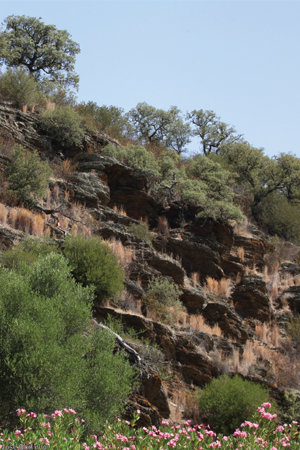
|
 |
Almost inconspicuous among the vast plains, there are outcrops evidencing the geological history that would otherwise remain hidden underground. The geology of this region is very rich, as demonstrated by the high number of mines that have exploited the metal ores since the time of the Phoenicians. Minerals associated with those that are rich in copper, zinc and iron, give a white “glow” to these sites, and this may be the origin of the names of some mines in the region such as "Neves-Corvo” (neve = snow). These stony (rupicolous) habitats are full of life. Erosion has formed tiny cracks that widen with time and fill with soil, soon to be colonized by pioneer organisms: lichens, mosses and small vascular plants. The lichens cover many rocks, giving a colorful look to the landscape throughout the year. Some of these lichens are almost invisible to the naked eye since they grow inside the rock structure. Reptiles, like the large psammodromus lizard, use these habitats for protection and to increase body temperature by basking on the sun-heated stones. Many birds, such as raptors like the Eurasian eagle-owl, use the top of the outcrops to watch the surrounding plains.
|

|